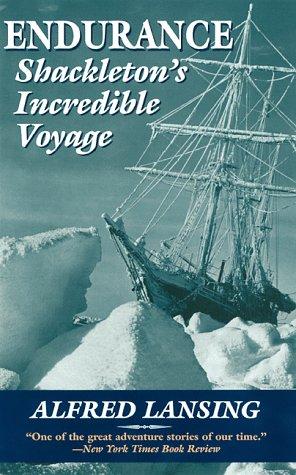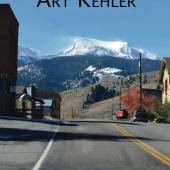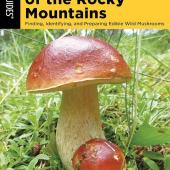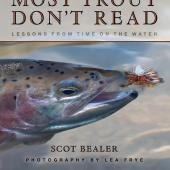Great Winter Reads
ENDURANCE
Shackleton's Incredible Voyage to the Antarctic
Magellan, Columbus, Peary, Hilary, and Norgay. History has always lauded these men for their achievements: the waters crossed, the land discovered, the mountains climbed. Sir Ernest Shackleton, a long-neglected explorer from the early 20th century, is finally getting his due simply because he survived.
In, Endurance: Shackleton’s Incredible Voyage to the Antarctic, Alfred Lansing provides a painstakingly detailed account of the expedition that eventually left 28 men stranded on the icy floes of the Weddell Sea in Antarctica for 17 months. Using journal entries and personal interviews with the men and illustrated by the black-and-white photographs of expedition photographer Frank Hurley, this book—now in its fifth printing since 1959—gives a thorough report of the Imperial Trans-Antarctic Expedition.
Though Shackleton failed miserably by the standards of exploring (his group never even set foot on the continent they planned to cross), he is recognized by Lansing as a complete success. The wonder of Shackleton’s journey is that through the entire ordeal—losing the ship to the crushing ice, living on the floes for 17 months, traveling 850 miles by sea in an open dinghy, and hiking over nearly impassable terrain—Shackleton remained a leader. Not one man perished during the journey, and many left with praises for their stalwart captain. "He was the greatest leader that ever came on God’s earth, bar none," one of his men said.
Almost 90 years after his failed expedition to the icy Antarctic, Shackleton is being recognized not for his exploits, but for his character. He has been the subject of many recent books, documentaries, and even made-for-TV-movies. Though his accomplishments in exploration pale in comparison to those that history traditionally honors, Shackleton was a hero because he refused to let the hopeless situation control his actions. As Lansing writes, "They were for all practical purposes alone in the frozen Antarctic seas…nobody in the outside world knew they were in trouble, much less where they were…Thus their plight was naked and terrifying in its simplicity. If they were to get out, they had to get themselves out."
As most detailed accounts are, Endurance is slow in some parts; there are only so many ways an author can say the men were hungry, wet, cold, and scared until it gets a little tedious. But Frank Hurley’s striking photographs and the descriptions of the Antarctic world and its hazards—sea leopard attacks, capsizing icebergs, and frostbite—make the book a must-read. Throughout the account, however, Lansing keeps the focus on Shackleton, because it was through his strength that they survived. As one of the crew said, "For scientific leadership give me Scott; for swift and efficient travel, Amundsen; but when you are in a hopeless situation, when there seems no way out, get down on your knees and pray for Shackleton." —Ashley Sanford
ALMANAC OF THE ENVIRONMENT
The Ecology of Everyday Life
Almanac of the Environment: The ecology of Everyday Life by Valerie Harms is a compilation of environmental writings by a multitude of authors. The optimist in me likes this book because it's great for people who want to get a basic education on environmental issues (note that the 1994 publication date means many of the statistics may have changed), and it provides specific examples of how humans make such a lasting impact on nature. The format allows the reader to explore the book in bits and pieces.
The pessimist in me saw an indictment of practically every aspect of life today. But maybe that's the point. In addition to the ubiquitous cars-packaging-oil-CFC taboo list, the book claims so many things irreparably damage the environment (office buildings, Gore-Tex, jewelry, leather, septic tanks, tourism, batteries, new appliances, cruise lines, golfers, off-road vehicles, and commercial fishing, to name a few) that it seems nothing is acceptable. The authors do well at explaining why these things are harmful but only occasionally offer detailed solutions that go beyond "conserve" or "encourage industries to work toward improving their environmental performance."
Regardless, it's hard to not think about this book. While stopped at a red light the other day, the irony of a "Cows Not Condos" bumper sticker on a Ford Expedition kept me asking: If everything we do has some negative environmental impact, what does it really mean to be environmentally conscious? Is it realistic to expect each other to employ every conservation strategy, or is it okay to drive the Expedition if the driver donates $1,000 to the "Cows Not Condos" cause? —Tina Orem
SAVOR MONTANA COOKBOOK
Montana's Finest Restaurants & Lodges, Their Recipes & Tasty food and history don’t often come to mind at the same time. Yet that’s exactly what Chuck and Blanche Johnson have put together in their Savor Montana Cookbook. It’s the first title in a cookbook series that explores the epicurean delights of Big Sky Country towns.
This book takes you on a culinary tour starting in Billings, heading west through Bozeman and Missoula, and then way up north to St. Mary in Glacier National Park. During their journey, the Johnsons highlight the restaurants—as well as the histories of each area—while featuring tantalizing recipes from each one. The book’s mouth-watering recipes run the gamut, from classic Montana fare like Jackson Hot Spring Lodge’s (Jackson) Cowboy Beef Filet Mignon to more exotic dishes like the Continental Divide’s (Ennis) Broiled Foie Gras with Tobikko Caviar.
While many of the recipes are complicated and time-consuming, they were so interesting that I found myself trying to justify taking a day off to prepare for a fabulous dinner party. Several simpler recipes are also included, such as Enzo’s (Billings) Sautéed Stuffed Salmon.
Visually, the book creates a vintage feel in its pages with the use of historical shots, set off by sepia tones. However, this is a cookbook and the lack of color photos to show off the restaurants and their delectables left my visual senses feeling dull.
Finally, we can only hope that many of the notable restaurants omitted from this collection will be included in the next go-around. Most noticeably absent is the restaurant mecca of Livingston, which boasts the highest number of eating establishments per capita in the state. Also missing are Q in Billings, Rainbow Ranch Lodge in Big Sky, Mint Bar & Grill in Lewistown, and Montana’s only East Indian restaurant, Tipu’s Tiger in Missoula.
Even so, this book is a pleasure for lovers of fine dining who enjoy cooking and spicing it up with Montana history. —Susan Sheard
AVALANCHE EDUCATION
The Avalanche Handbook by David McClung and Peter Schaerer of The Mountaineers is the über text in the field of avalanche science. This is the required textbook for MSU’s graduate-level Snow Sciences class; as such you might imagine that along with masses of useful knowledge for the backcountry enthusiast it also involves wading through a ton of microscope-view snowflakes, graphs, charts, and theories. The Avalanche Handbook is a necessarily intimidating piece of scientific literature, but the authors make a clear effort to bring it down to the layman’s level.
Chapter eight should be a must-read for every snowslider prior to any backcountry or out-of-bounds travel. By covering equipment and precautions for backcountry travel including route-selection and escape routes, it revokes your ability to use the “ignorance is bliss” decision-making process. The chapter ends with search methods for victims, including how to use all that expensive avi gear. Equally useful is the latter part of chapter six, which details the types of stability tests and how to interpret the results. After you’ve read these chapters you might just have the motivation to page back through the others on snow metamorphosis, slab formation, et cetera. This book is a must-have for any serious winter backcountry user.
E.R. LaChapelle’s The ABC of Avalanche Safety is basically a portable CliffsNotes version of the above chapter eight minus the pictures and graphs. This text-heavy book introduces the reader to the vocabulary of snow science and to the physical processes of snow accumulation, eventual release, and safety and rescue—giving you just enough information without bogging you down. This information is beneficial for spotting and avoiding potential snow avalanche situations. The book’s ten steps for performing a search will come in handy—but only if you read it before you hit the slopes. The book concludes with a chapter on avalanche incident cases. Never underestimate the value of learning from others’ mistakes.
An easier and more basic read is John Moynier’s Avalanche Aware. This take-along-size book starts with a Q&A chapter on avalanche basics. It continues in a very intuitive direction to preparedness by explaining what you’ll bring to the slopes, the terrain you’ll see when you get there, and the effects of weather on the snowpack. The chapters on snowpack evaluation and testing will give you a good start on digging pits and performing stability tests. This book will serve you well as an introduction to winter backcountry recreating and the hazards you can expect to encounter. —Annie Fast
All of these avalanche education books can be found at Northern Lights Trading Company in Bozeman, 586-2225.











